A few months ago we purchased the higher-end 1L corporate desktop PCs from Lenovo, HP, and Dell. One set stood out in the market with the Lenovo ThinkCentre M80q Tiny and the M90q Tiny. These options were incredibly close to one another in terms of specs and pricing to the point why we were not sure why there were two different units. Today, we are taking a look at the M80q Tiny in an effort to understand the differences as part of Project TinyMiniMicro.
Project TinyMiniMicro Background
In Project TinyMiniMicro we are purchasing a large number of these devices from different sources. While a standard STH review is of a new product, these TMM nodes occasionally have specs that differ from what one would expect. In all of these pieces, we are going to talk about what makes the nodes unique. We are now well over 35 different nodes to increase diversity. We are testing these on a more circular economy/ extended lifecycle basis to see how they can be deployed after their initial use as corporate desktops. As always, we have a video version of this article.
We recommend opening this video in a YouTube tab/ app for a better viewing experience.
For our $556 (before tax), we received a node with an Intel Core i5-10500T, 4GB of memory, WiFi 6, and a 128GB NVMe SSD. We even got an embedded Windows 10 Pro license which would have cost us around $140 alone. Since this was a new unit, we received a 1-year onsite warranty from Lenovo at that price.
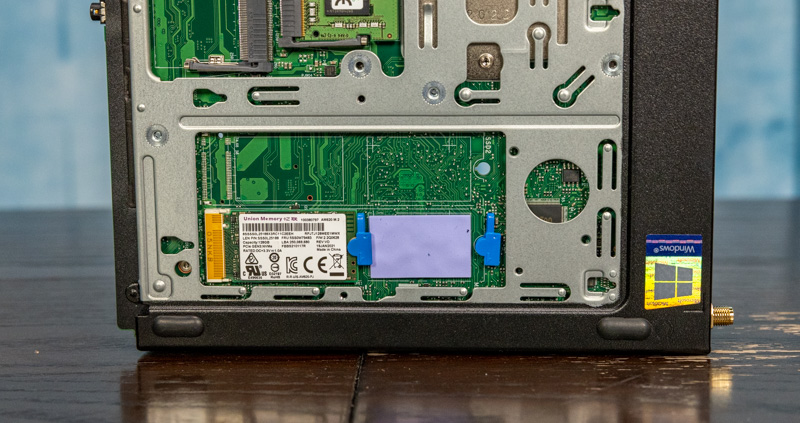
This is part of our new series where we are taking a look at some of the newest 10th generation ~1L PCs on the market. With our series, we understand that there is always going to be tension. Older units are less expensive, but unlike buying an old hammer, we get significantly more capabilities and features in new versions. So we wanted to update Project TinyMiniMicro to see if newer units justify the price premium over older ones.
Here, the biggest challenge is going to be the price not just over older units, but also among Lenovo’s other offerings. When we took a look at this unit compared to the M90q Tiny as well as the M75q-2 (Gen2) Tiny we saw that this is in the unenviable position of being a cost-optimized product without the pricing to translate it to meaningful cost savings.
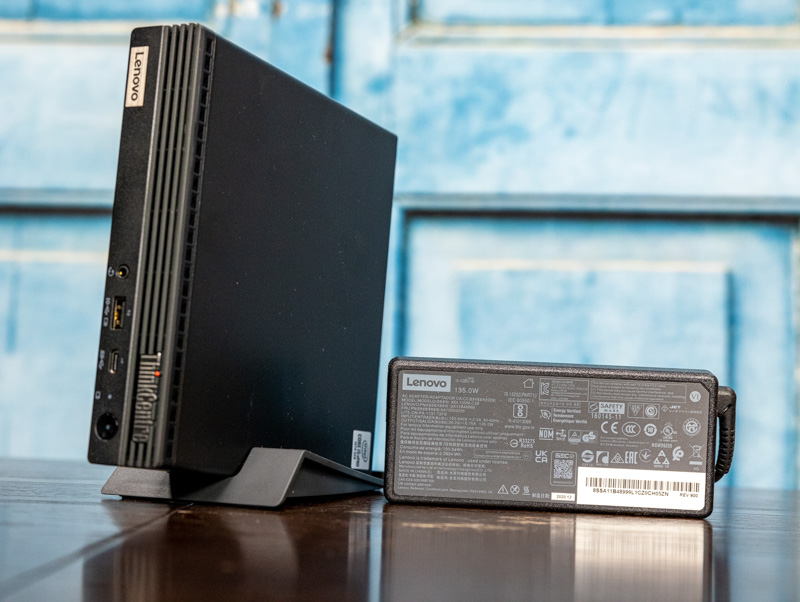
We are going to go into a quick hardware overview, then into the key specs. We are then going to talk a bit about performance and power consumption before getting to our lessons learned from these units and our final words.
Lenovo ThinkCentre M80q Tiny Hardware Overview
The Lenovo ThinkCentre M80q Tiny is around 1L in size and uses the updated front design that we first saw with the Lenovo ThinkCentre M75q Gen2 Tiny and then with the Lenovo ThinkCentre M90q Tiny. Stacking these atop one another, it would be hard to figure out which unit is which as can be seen in the accompanying video. So much is similar, that one will notice that the M80q Tiny and M90q Tiny hardware overviews are similar because there are only a few differences to point out.
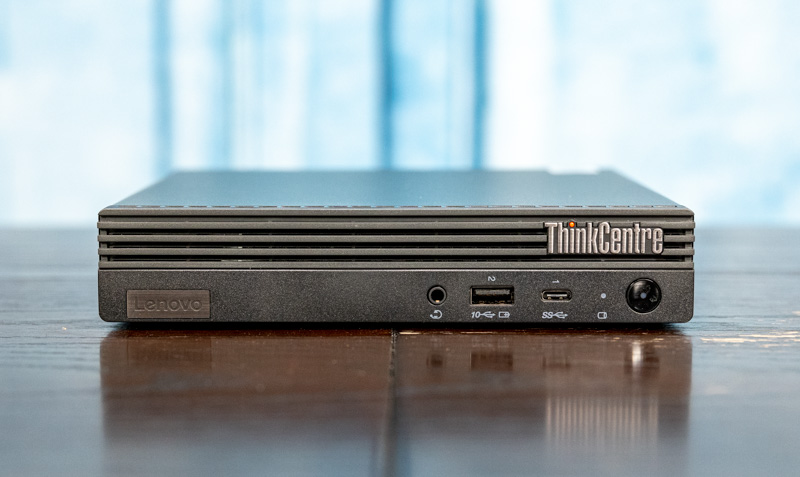
Aside from the power button, we get a headset port on the front of the system. We also get a USB 3.2 Gen2 Type-A port and a USB 3.2 Gen1 Type-C port on the front. Older units typically only had Type-A, but we wish both could be Gen2 ports.
On the rear of the unit, we get a fairly standard port configuration. There are both DisplayPort and HDMI output options standard. We get two USB 3.2 Gen2 and two Gen1 Type-A ports for four total. Lenovo has an optional slot that one can configure as blank, or get various serial or display outputs. We ordered the optional USB Type-C port here. We did not get to test this, but the documentation we saw said this can offer a third output using a DisplayPort dongle on the Type-C port if one wants. We just like having more USB Type-C ports.
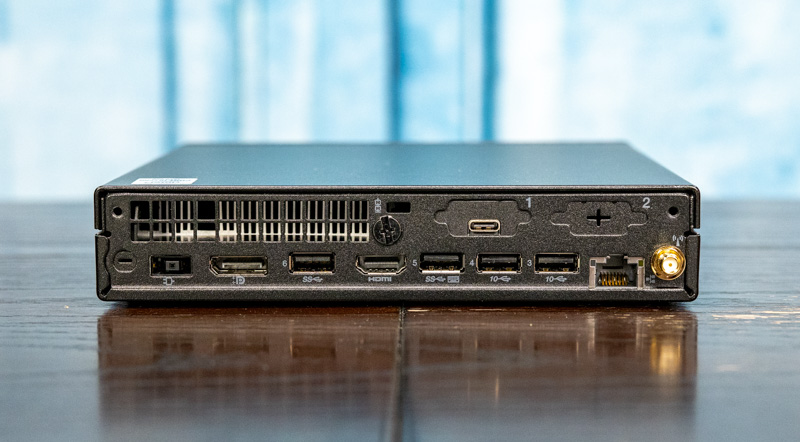
Networking is provided by a RJ45 connector. This is an Intel i219-LM NIC which is important. This configuration is valid for Intel vPro so we need to use this NIC. In other lines, such as with the Dell and HP lines, moving down a family level in this space means one gives up vPro, but not with the M80q so long as one has a compatible processor. While we wish this was a 2.5GbE unit, this is normal in this generation. We will quickly note that the rear of this system is identical to the M90q Tiny.
Overall, there is a lot that is very similar. Perhaps the biggest change to this unit over the M90q Tiny, and similar to the M75q-2, is that the top of the M80q Tiny does not have vents for cooling higher-TDP processors. The M80q Tiny only uses 35W TDP CPUs from what we can tell while the M90q Tiny can use 35W or 65W parts.
Since this got longer than we were expecting, we are going to move the internal overview to its own section next.

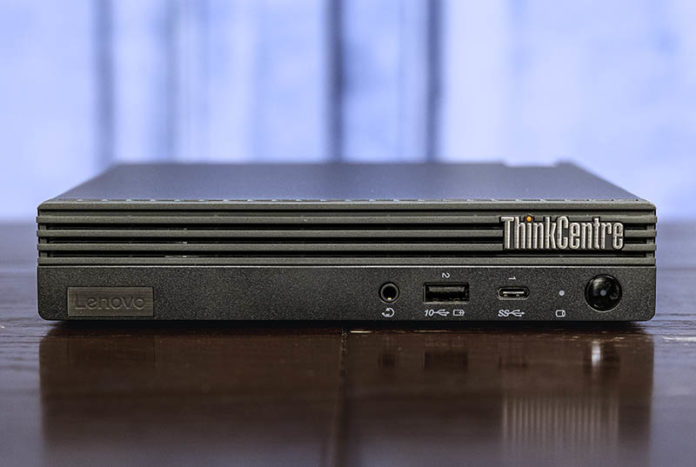



Lenovo seems to put really solid work into the teeny desktops(except for their use of the little proprietary cable for the 2.5in bay, in contrast to Dell’s tendency to go with the much nicer power/data connector on a little riser from the motherboard; though that is partially atoned for by their tendency to go with dual m.2 under that lovely bottom panel for easy access); and this is no exception; but I’m kind of astonished that they even bothered to list, or stock, a system with such a raging discrepancy between CPU and RAM.
4GB of RAM has been recognized as a cruel joke for general desktop purposes for at least a generation, possibly a couple of them, now; while the i5-10600T, while certainly not the top of the heap, is a punchy CPU, probably about as punchy as you’d want given the cooling constraints.
Is this a byproduct of the absolutely awful supply chain disruptions that have been going on lately? A tactic to be able to list the most attractive “starting at just $…” value possible; or are corporate customers much more tolerant of doing fleet-scale RAM upgrades after purchase than I would have expected?
P340 Tiny actually became tool-less, they finally added a grip handle to the screw, you can pull that out and unscrew it with your fingers.
M80q obviously lacks better airflow, they use cheaper aluminium CPU cooler, no PCIE x8 riser. This system could have been much better…
I’m gonna post a guide on P340 Tiny on the forums later.
Hello – any chance you could do a shoot out style comparison across these different 1L machines? And provide a few recommendations as to which ones to buy?